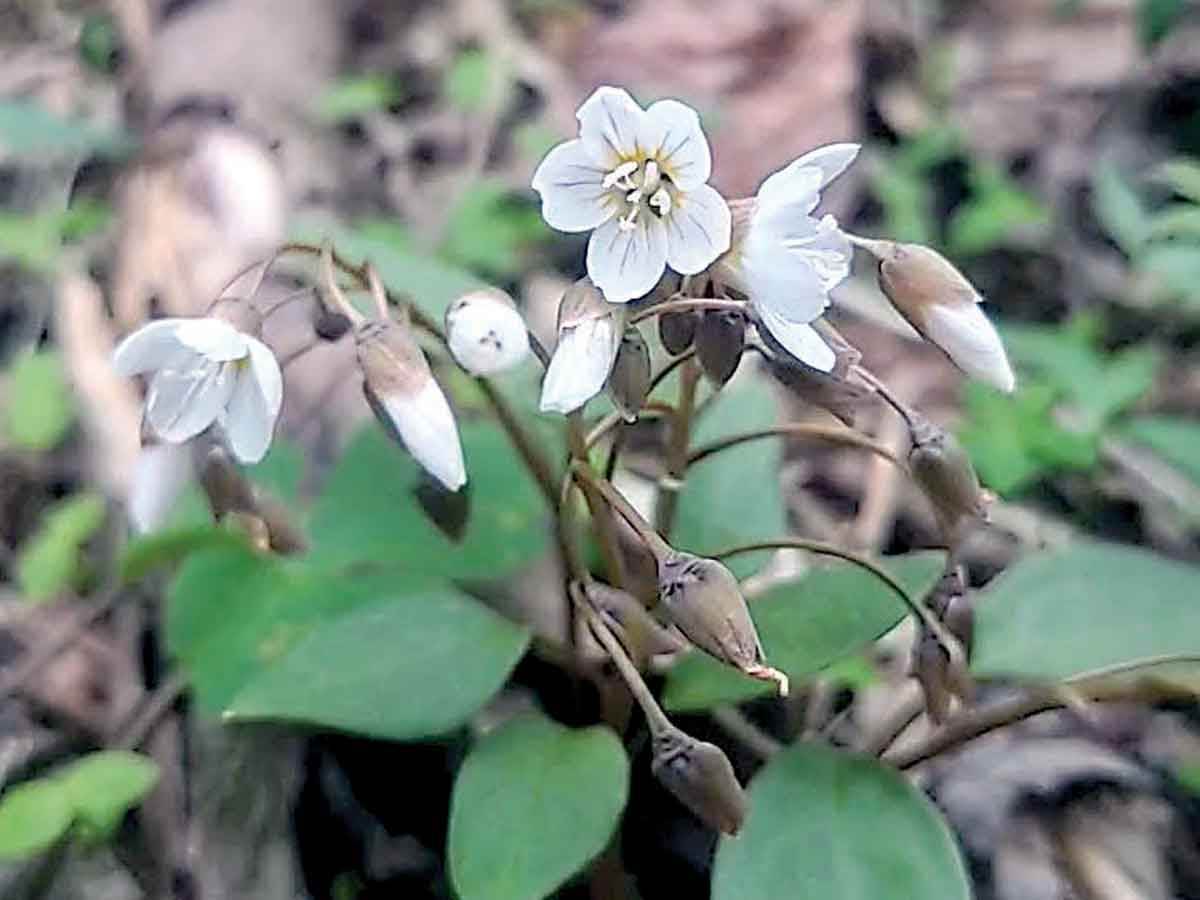Notes from a plant nerd: A little beauty on an early spring day

One of my favorite things in the world to do is walk people into a field of wildflowers that they haven’t seen yet, point one out and then watch as they realize that those flowers are also blooming all around them. It’s not their fault that they didn’t see them at first. Often, until we are shown something, we don’t see it. Once we are shown it, it is difficult to not see it.
This is known as the “pop-out effect,” and it certainly does not just occur with wildflowers. For most people, if they have a reference for this phenomenon, it occurs when you buy a new (or new-to-you) car model. Before you got that car, you hardly ever saw them on the road. But as soon as you start driving it, you see the same type of car everywhere. That’s the “pop-out effect.”
In the early to mid-springtime, most of the wildflowers blooming in the woods around us are small and easily overlooked. From the earliest blooms of Trout Lily (Erythronium sp.) and Liverleaf (Hepatica sp.) in late winter through the first of the showy wildflowers like Trilliums and Lady Slipper Orchids (Cypripedium sp.) of spring, many people will be walking along trails and not even realize they are walking past beautiful and diverse plants, sometimes accidently stepping on them.
In our modern culture, there is an unofficial medical condition known as “Plant Blindness.” People with this “condition” exhibit symptoms like, “(a) thinking that plants are merely the backdrop for animal life; (b) failing to see, or notice or focus attention on plants in one’s daily life; (c) misunderstanding what plants need to stay alive; (d) overlooking the importance of plants to one’s daily affairs” according to James Wandersee and Elisabeth Schussler, who coined this term in 1999.
Among my favorite of the really small and really beautiful wildflowers of the Southern Appalachian Springtime are Spring Beauty (Claytonia sp.). With flowers about the size of my pinky nail, it is all too easy to overlook this spectacular plant. Plus, Spring Beauty are considered one of the true spring ephemerals, meaning that for most of the year these plants lay dormant under the ground waiting for that perfect blend of warmer soil and air temperatures and available sunlight that reaches all the way to the forest floor, before the trees have time to put on their leaves. The Spring Beauty, along with other true ephemerals like cut-leaved Toothwort (Cardamine concatenate) and Bishop’s Cap (Mitella diphylla) emerge from the ground in springtime, leaf out, make a flower, set seed, and die back to the ground in the span of only a few weeks. So, you either get to see them when they bloom or you must wait until next year to catch them again. This, combined with their beauty, makes them special.
There are two species of Spring Beauty that bloom in the woods around us. The Virginia Spring Beauty (Claytonia virginica) has long, lance-shaped leaves, while the Carolina Spring Beauty (Claytonia caroliniana) has leaves that are shorter and wider than its Virginia cousin. Now, don’t let the names fool you as both the Virginia and Carolina spring beauties can be found throughout the Eastern U.S. and into Canada. Often, plants with state names in their botanical name just means that is where the first European explorer found them growing.
Related Items
The flowers of both species look similar, and at first glance seem to be pink. Upon closer inspection, often while lying on the forest floor, it turns out that their five flower petals are white with pink stripes. They even have pink colored pollen, and in certain light they look like they are coated with sugar crystals, lending me to think that they should taste like peppermint candies. They don’t, trust me. However, one of their other common names, Fairy Spuds, refers to their edibility and use. Spring Beauty has an edible tuber, like a potato and would make a great giant baked potato — were you the size of a fairy. Since you’re not, perhaps they are best left in the ground to grow, and to flower, and to bring joy on an early spring day.
(Adam Bigelow lives in Cullowhee and leads wildflower walks and ecotours through Bigelow’s Botanical Excursions. This email address is being protected from spambots. You need JavaScript enabled to view it..)









